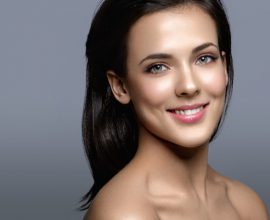Laser Skin Resurfacing 101
Laser skin resurfacing can be used to treat a variety of unwanted facial attributes as well as improve the appearance of the skin by eliminating wrinkles, fine lines and scars. It can also treat discolored areas while improving the clarity and texture of your skin. However, laser resurfacing is not limited to just these facial blemishes. Physicians have found that laser resurfacing can have many other wonderful uses.
Laser skin resurfacing is typically painless and has little to no risk. However, you should always gather as much information as possible about any procedure before making a decision. It’s important to realize there are different types of laser skin resurfacing and choosing the right one for you is an important step in the process. So how do you know which procedure is best for you?
 The first thing you must decide is if laser resurfacing will improve the skin on your face. Take a look in the mirror. Do you see wrinkles, freckles, scars, sun spots and discoloration? Laser resurfacing will treat all of these conditions including dynamic and static wrinkles. Dynamic wrinkles are the wrinkles which appear when you make certain facial expressions or movements. Static wrinkles are the wrinkles which remain visible whether movement is made or not.
The first thing you must decide is if laser resurfacing will improve the skin on your face. Take a look in the mirror. Do you see wrinkles, freckles, scars, sun spots and discoloration? Laser resurfacing will treat all of these conditions including dynamic and static wrinkles. Dynamic wrinkles are the wrinkles which appear when you make certain facial expressions or movements. Static wrinkles are the wrinkles which remain visible whether movement is made or not.
Melasma is a skin pigmentation that results from exposure to the sun. It looks like a patch of skin discoloration on the facial area and is more prevalent in woman between the reproductive years of 20-50. As much as we try, it is inevitable that facial scars may occur sometime in a person’s life. Many people develop acne which could eventually turn into scars. Laser skin resurfacing can wipe away raised scars as well as pitted scars. Are you wondering about other blemishes such as moles, birthmarks and vascular conditions? Laser skin resurfacing can alleviate all of these unsightly facial characteristics. It can even remove tattoos!
The next thing you must consider is which of the laser methods is best for your specific issues:
- Ablative lasers are used to remove scars from the facial area. With this method, scars are vaporized without burning the skin. Ablative lasers work by targeting the tissue below the skin in order to encourage new collagen growth and it usually only takes one treatment for sufficient results.
- Fractionated lasers are used to treat wrinkles. With this method, only the wrinkles are treated and not the surrounding skin. This makes the healing time much faster than other procedures which are used to treat wrinkles.
After you have decided that laser skin resurfacing is right for you, it is time to consider the physician. It’s important to find someone who is experienced with this type of procedure. Make sure you ask to see the doctor’s credentials in order to find out how long they have been doing these procedures. Request before and after photos of other patients to ensure laser skin resurfacing will work the way you imagine it.
Keep in mind that results, risks and total recovery times vary depending on the different circumstances. People who have darker complexions or olive skin tones may take 6-9 months to regain their normal pigmentation after a laser procedure. With many laser procedures, a patient may be prohibited from being in the sun. Furthermore, dormant viruses such as herpes may resurface as a result of these procedures. Understanding these limitations will help a person know whether or not they are a proper candidate for laser skin resurfacing.
– SP




